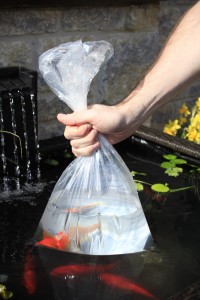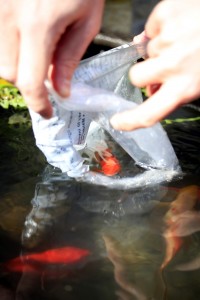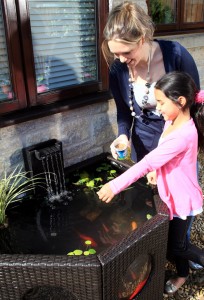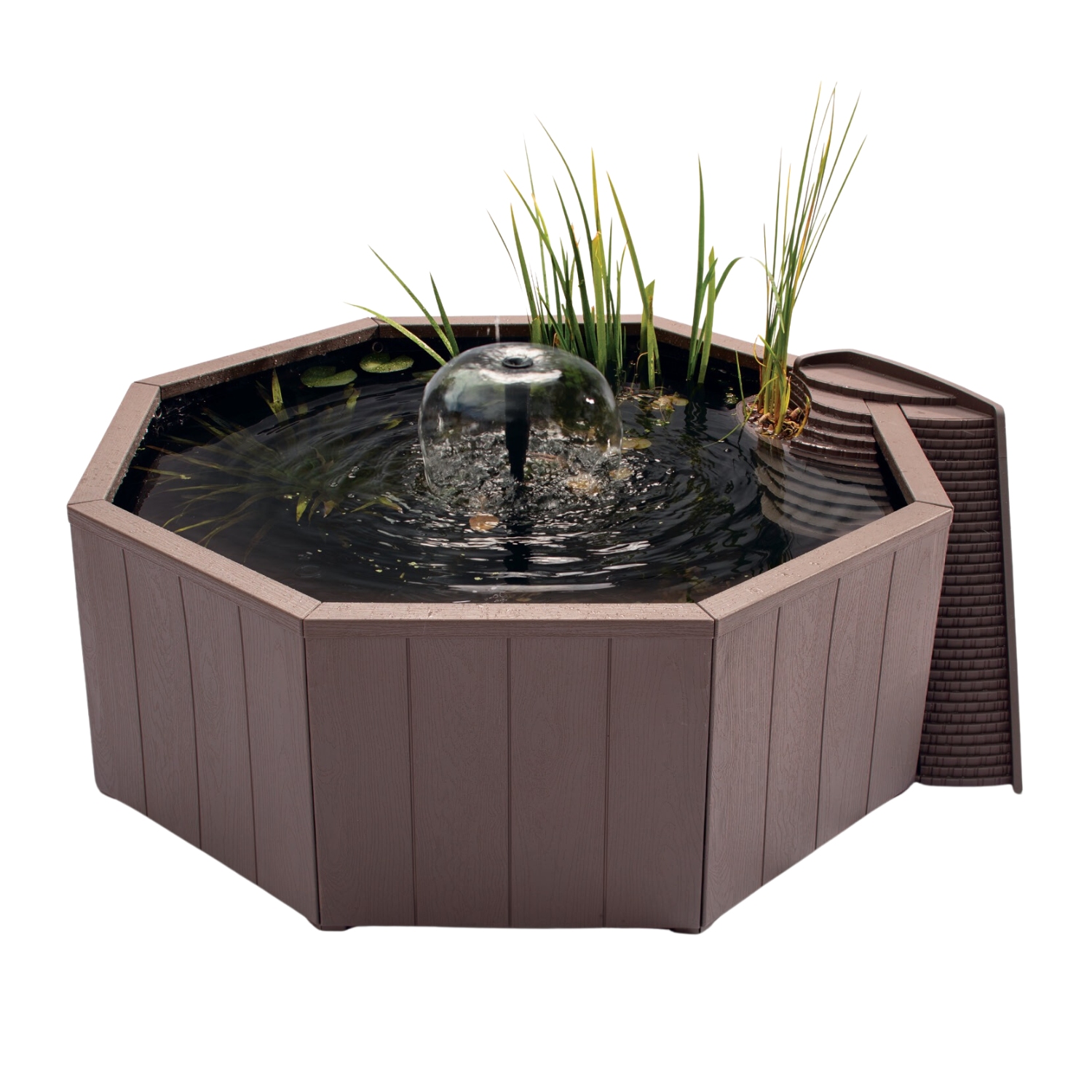Introduce Fish Successfully

Set up your pond and Inpond, adding tap water conditioner when you fill the pond. With the Inpond running (you can run your fountain or waterfall at this stage), leave it all to settle for 24-48 hours to ensure everything is working correctly and allow the water temperature to stabilise.
Only introduce one or two fish on day two (at the earliest). The trick is to increase fish quantity slowly over a period of three months to allow the life support system to mature*.
*What is a mature ‘life support system’, and why is it necessary?
A healthy pool with fish is maintained by the Inpond ‘life support system’. The ‘life support system’ maintains water quality (as well as clarity) by providing an environment for friendly bacteria that feed on the waste products within the pond. This population of friendly bacteria needs to gradually grow to meet the levels of waste being produced within the pool. The population can be increased by adding a bio start pond supplement.
FEEDING
Food is the source of waste products. Whether it is eaten by the fish and excreted as waste, or when more food is put into the pool than the fish can eat in 5-10 minutes (often called ‘over feeding’). Carefully feeding the fish to ensure none is left over, and only feeding once a day for the first few months, reduces the amount of waste put into the water
QUANTITY OF FISH INTRODUCED
The fish population should be increased slowing over the first few months while the ‘life support system’ matures. Less fish means less food, less food means less waste, less waste is easier to deal with by the maturing population of friendly bacteria.
PARTIAL WATER CHANGES
During the first three months, as fish are introduced, toxic levels of invisible waste products can build up and harm the fish. To prevent the risk of this, regular partial water changes are recommended. This will dilute toxins and help to maintain a healthy pond. Pond fish are generally healthy and easy to keep however, if stressed by poor water quality, they can become susceptible to disease.
After three months, by which time the life support system will be mature, fish feeding can be gradually increased, and the frequency of the partial water changes reduced. You will now have a healthy, matured pool. (if this is carried out during the spring or summer – fish shouldn’t be introduced in the winter or cold conditions).
If keeping fish, the pump and filter must be run constantly. Water movement from the pump (via the fountain or waterfall) increases essential oxygen in the water for the fish. The friendly bacteria within the ‘life support system’ that maintain a healthy pond also require a flow of oxygen rich water to live. If the ‘life support system’ is turned off for more than a couple of hours, oxygen levels will drop and the population of friendly bacteria will reduce.
Buy and release fish
Always choose healthy, strong looking fish from a good aquatic retailer. Ensure they are a species suitable for the Window Pond.
When you have purchased your fish you should take them straight home, gently transporting them in a shaded bag as fish are less stressed in the dark.



Because of the shock of moving home, the fish may hide for a day or two. Do not feed them if they are hidden and do not come out. After a day or two, try adding a little food. They will soon get used to their new home and become familiar with the feeding routine and be waiting for you at the windows or surface when they see you approach.
Feed your fish
New fish/pool
Once you have added fish to the pond, allow them to settle. They may not take food at the start, so leave them for a day or two if they are hiding and not active. Then, feed them once a day to start, increasing to twice a day after the three months ‘new pond’ maturing period provided the temperature warm enough for the fish to be actively feeding – over 50 degrees F.
Established fish
Fish need different levels of food at different times of the year. During the cold months a fish will slow down and actually stop feeding once the temperature drops below 41 degrees F. As the water warms up in spring and the fish become more active (usually around 50 degrees C) try feeding a little, once a day. As the water warms up, and the fish become more active feeding can be increased to twice a day.
Only feed the fish as much food as they can eat in five to ten minutes. If there is any food left in the pond, scoop it out with a fish net. Leaving uneaten food in the pond will pollute the water and cause harm to the fish. You will get used to the amount the fish will take.

Fish can be fed at any time of day but if you want to tame the fish you should try and keep to a regular routine. Feed them at the same place in the pond, and at the same time of day and before long they will be waiting for you as you approach at feeding time.
It is great fun to keep fish as family pets but it is important to teach children how to care for their fish correctly. Supervised feeding is a great way to teach them about the balance of care.
Feed your fish a good quality, proprietary fish food suitable for the species you are keeping. This will ensure they get all the nutrients necessary to grow and be healthy.
HINT: Turn down (or off) the fountain or waterfall at the flow control valve just under the water surface. The flow will be full transferred to the other outlet under the water surface. This allows for a still, clear view into the pool, and prevents the food getting churned into the water then sucked into the filter. Turn the feature back on once the fish have finished feeding.







